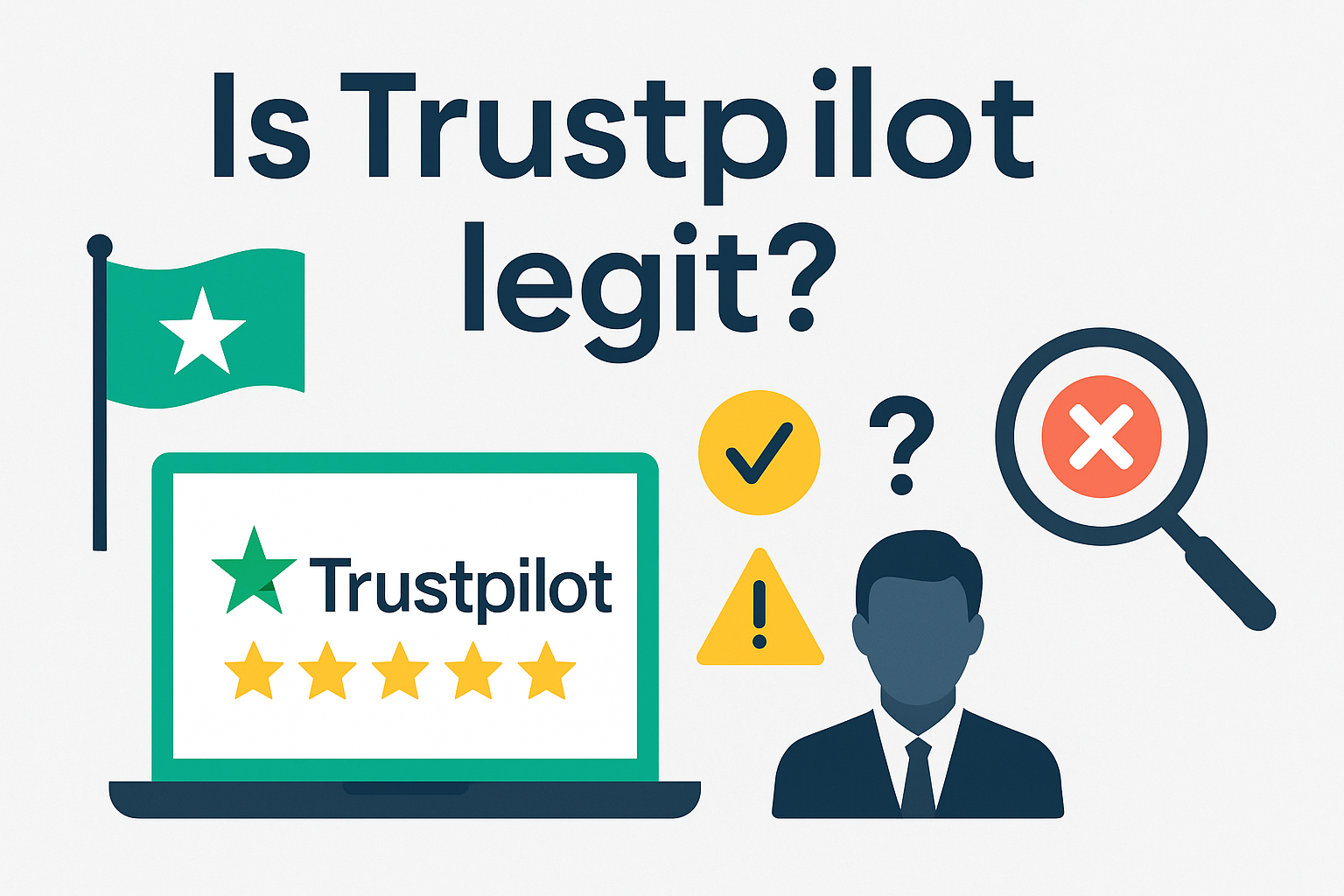In an age where online reviews significantly influence consumer behavior, platforms like Trustpilot play a crucial role in shaping business reputations. But a common question arises among users and businesses alike: Is Trustpilot legit? In this comprehensive article, we will delve into the legitimacy of Trustpilot, how it operates, the pros and cons, and what consumers and businesses should keep in mind when using the platform.
What is Trustpilot?
Trustpilot is a consumer review website founded in Denmark in 2007. It allows customers to leave reviews for businesses, helping other consumers make informed decisions. With over 300 million reviews covering more than 1.1 million domains, Trustpilot has become one of the most influential platforms for online reviews globally.
The site is available in multiple languages and serves a worldwide audience. Businesses can claim their profile, respond to reviews, and use Trustpilot as a feedback tool. While it offers basic services for free, many businesses opt for paid plans that provide more features and tools.
How Does Trustpilot Work?
Trustpilot operates on a freemium model. Here’s how it typically works:
- Customer Submits Review: Anyone can leave a review about a company, whether they were invited by the company or not.
- Moderation and Detection: Trustpilot uses automated fraud detection software to identify suspicious activities. Users can also report reviews that violate guidelines.
- Company Response: Businesses can publicly respond to reviews, offering clarifications, apologies, or gratitude.
- Display of Reviews: Reviews are posted publicly and contribute to the company’s star rating and profile.
Paid subscribers can customize how they showcase reviews, gain insights into customer sentiment, and request reviews through automated systems.
Is Trustpilot Legit?
Yes, Trustpilot is a legitimate company. It is publicly listed on the London Stock Exchange and adheres to transparency and data protection regulations. However, like all review platforms, its legitimacy depends not only on its structure but also on how the platform is used and perceived.
Evidence of Trustpilot’s Legitimacy:
- Transparency Reports: Trustpilot regularly publishes transparency reports showing the number of fake reviews removed, how many companies have been flagged, and more.
- Fraud Detection Software: The platform uses machine learning and AI to detect unusual patterns that may indicate fake reviews.
- Community-Driven Reporting: Both businesses and consumers can report suspicious reviews for investigation.
However, despite these safeguards, no system is foolproof, and Trustpilot has faced criticism and controversy.
The Pros of Using Trustpilot
- Large User Base: With millions of reviews, Trustpilot offers extensive consumer insights.
- Business Accountability: Public feedback encourages businesses to improve their services.
- Response Mechanism: Businesses can respond to reviews, showing they care about customer experience.
- Consumer Empowerment: Reviews help other consumers make better purchasing decisions.
- Data Insights: Paid users gain access to valuable analytics that can inform marketing and customer service strategies.
The Cons and Controversies Surrounding Trustpilot
- Fake Reviews: Despite its detection systems, fake reviews (positive or negative) sometimes slip through the cracks.
- Biased Display of Reviews: Paid plans allow businesses to highlight only favorable reviews on their websites.
- Review Removal Concerns: Some users have reported their genuine negative reviews being taken down, raising concerns about censorship.
- Pressure on Small Businesses: Businesses may feel pressured to subscribe to paid plans to manage their reputation effectively.
- Manipulation Risks: Unscrupulous businesses may attempt to manipulate their ratings by soliciting fake reviews or flagging legitimate negative ones.
Real User Experiences: What People Are Saying
Consumer forums like Reddit and Quora often feature heated discussions about Trustpilot’s trustworthiness. Some users praise the platform for helping them avoid scams, while others complain that dishonest businesses maintain high ratings through review manipulation or by paying for advanced features.
Example:
- “I found a company with 5-star reviews on Trustpilot, but my experience was terrible. When I left a negative review, it was flagged and removed.”
- “Trustpilot saved me from getting scammed by an online store. The negative reviews were spot on.”
These contrasting experiences underline the need to use Trustpilot with a critical eye.
How Trustpilot Deals With Fake Reviews
Trustpilot has several mechanisms to prevent and address fake reviews:
- Automated Scanning: Their AI scans for behavior patterns indicative of fake reviews.
- Manual Moderation: Some flagged reviews are manually reviewed by Trustpilot staff.
- Community Flagging: Anyone can flag a review for investigation.
- Legal Action: In serious cases, Trustpilot has taken legal action against businesses that attempt to manipulate the system.
In 2020 alone, the company reported removing over 2 million fake reviews.
How to Use Trustpilot Effectively as a Consumer
- Look for Patterns: Don’t rely on a single review. Check for consistent themes across multiple reviews.
- Read Responses: A company’s response to criticism can be just as telling as the review itself.
- Cross-Check Reviews: Compare Trustpilot reviews with those on other platforms like Google, Yelp, or BBB.
- Beware of Extremes: Extremely positive or negative reviews may be less reliable. Look for detailed, balanced feedback.
What Businesses Should Know
If you’re a business owner, here are some ways to use Trustpilot constructively:
- Engage with Reviewers: Thank customers for positive reviews and address negative ones professionally.
- Encourage Honest Feedback: Invite reviews but don’t incentivize or script them.
- Monitor Your Profile: Regularly check and respond to reviews to maintain your reputation.
- Use Insights: Leverage Trustpilot’s analytics to identify trends and improve services.
Alternatives to Trustpilot
While Trustpilot is widely used, it’s not the only player in the game. Consider these alternatives:
- Google Reviews: Integrated with Google Maps and Search, making it highly visible.
- Yelp: Especially strong in the U.S., focusing on service-based businesses.
- SiteJabber: Another consumer review platform with a focus on eCommerce.
- Better Business Bureau (BBB): Popular in North America, it combines reviews with business accreditation.
Final Verdict: Is Trustpilot Legit?
Yes, Trustpilot is a legitimate and valuable review platform, but like any system that relies on user-generated content, it’s not without its flaws. It serves as a useful tool for both consumers and businesses when used appropriately and critically.
The key to using Trustpilot effectively lies in understanding its strengths and limitations. Consumers should treat it as one piece of the puzzle in decision-making, while businesses should use it as a tool for growth, engagement, and transparency.
In conclusion, Trustpilot is legit — but a healthy dose of skepticism and critical thinking goes a long way in making the most of what it has to offer. Also Read: Luxury Villas Ibiza Le Collectionist




